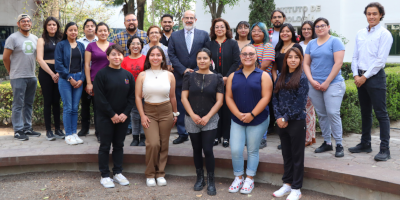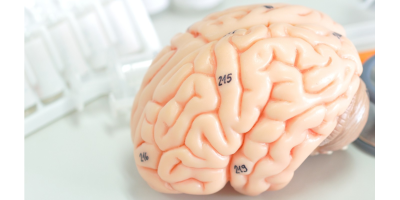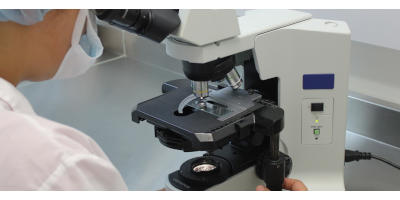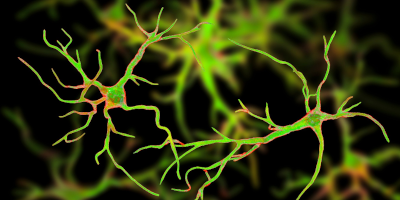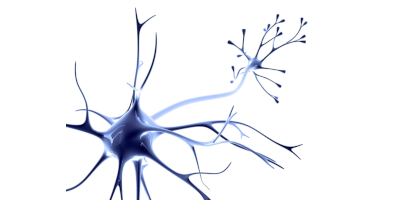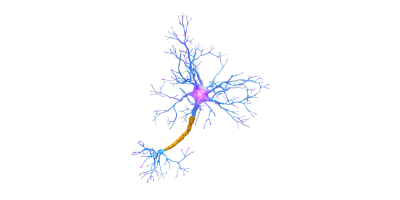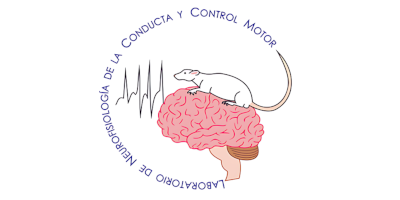Research Professors Laboratory of Behavioral Neurophysiology and Motor Control
Institute of Physiology
Benemérita Universidad Autónoma de Puebla
Behavioral and cognition laboratory of laboratory
In our laboratory we analyzed the several animal models of mental illness such as anxiety, depression, epilepsy, pain, narcolepsy-cataplexy, leukodystrophy and learning and memory.
Our approach is holistic through the analysis of behavior and neurophysiological basis. We used different techniques such as electrophysiology, pharmacology, endocrine and molecular biology.
We have models of high anxiety and depression the so-called low-yawning (LY) subline from Sprague Dawley rats. On the other hand, we have a resilient model to anxiety and depression, high-yawning (HY) rats.
At present, we are tested classical anxiolytics and antidepressant substances and importantly new compounds that are more effective, safer and with better tolerance to treat these devastation mental illnesses. Additionally, we have a tubulin mutant rat named taiep that is the only available model of human leukodystrophy hypomyelination with atrophy of the basal ganglia and cerebellum (H-ABC). Taiep is the acronym of main motor signs tremor, ataxia, immobility epilepsy and paralysis that showed along the first year of life. The MRI and genetic studies clearly showed that H-ABC and taiep rats had same images and a punctual mutation in the tubulin β4a gen.
In this tubulin mutant, we are currently characterizing the spike-wave discharges (SWDs) that are similar to absence crisis in human beings. We are also analyzing the sleep-wake cycle organization through the circadian cycle, sex dimorphism and main frequency components using the fast Fourier transformation (FFT). We studied with detail the circadian distribution of slow-wave sleep (SWS) and the rapid eye movement (REM) sleep and the immobility episodes characterize by a sudden loss of the muscle tone associated with an EEG similar pattern as REM sleep. In fact, taiep rats are excellent model of narcolepsy cataplexy due to demyelination.
Behavioral research group was founded in 1981 by Dr. Björn H. Holmgren Nilson and Dra. Ruth Urbá-Holmgren and Physician José R. Eguibar.
The aim of our research group is to analyze using different techniques such as neurophysiology, neurochemistry, neuropharmacology, and molecular biology different pathologic of the nervous system with a holistic approach.

Professor Jose R. Eguibar
PhD in Neuroscience, Dept. of Physiology,
Biophysics and Neuroscience CINVESTAV, 1998
MD University of Puebla 1985
Phone: (222)2295500 Ext. 5032
E-mail: jose.eguibar@correo.buap.mx
https://www.researchgate.net/profile/Jose_Eguibar
ORCID 0000-0001-6594-1141

Professor Carmen Cortes
PhD in Biomedical Research, Faculty of Medicine, UNAM
Psychology Universidad de las Americas Puebla
Phone: (222) 2295500 Ext. 7331
E-mail: carmen.cortes@correo.buap.mx
https://www.researchgate.net/profile/Carmen_Cortes
ORCID: 0000-0002-9163-2665

Professor Araceli Ugarte
M. Sc. in Biological Sciences, University of Tlaxcala
Phone: (222) 2295500 Ext. 7303
E-mail: mailto:araceli.ugarte@correo.buap.mx
Relevant topics
The research group analyze electrical brain activity to continuous electroencephalography (EGG) electromyography (EMG) and electrooculography (EOG) activities to 24 hours in freely movement rats.
Under these circumstances, we are able to record the epilepsy, sleep-wake cycle, food, and water consumption in order to analyze brain activity.
In the case of taiep rats, we are able to record the absence crisis in both sexes along the circadian distribution and different ages. We also are currently analyzing the action of anti-absence drugs such as lamotrigine, ethosuximide and valproic acid, as well as inhibitors of GABA recapture pregabalin and gabapentin.
Indication for sleep-wake cycle taiep rats shown a REM sleep disorder similar to human narcolepsy-cataplexy.
We are also analyzing the activation of hypothalamus-hypophysis-adrenal gland axis through the secretion of adrenocorticotrophic hormone (ACTH) and corticosterone in control and restraint stress subjects. In these animals, we also analyze the quality and distribution of sleep.
Current members
Araceli Ugarte, Master in Science, Bachelor Degree: Chemical and Pharmacologist and Master in Biological Sciences Universidad Autónoma deTlaxcala.
The aim of her work is to analyze maternal care and its consequences particularly does relate with mother-pup interaction stress responses and memory.
Ángel David Silva-Terrazas B.Sc. and Josue Lima-Morgan B.Sc.
They are Veterinary Physicians with a specialization on laboratory rodents, particularly rats. He is the responsible person of our animal room facilities and maintain of high and low-yawning rats, taiep and an outbred stock of Sprague-Dawley rats.
Teaching
Licenciatura en Biomedicina eje Fisiología (Bachelor in Biomedicine, with major in Physiology).
Licenciatura en Biomedicina
Maestría en Ciencias Fisiológicas (Master in Physiological Sciences).
Maestría en Ciencias Fisiológicas
Doctorado en Ciencias Fisiológicas (PhD in Physiological Sciences).
Doctorado en Ciencias Fisiológicas
Publications in international journal with strict peer review and indexed in Clarivate Analytics 2018-2024.
1) Juvenile taiep rats have shorter dendritic trees in the CA1 field of the hippocampus without spatial learning disabilities. Adriana B. Silva, Dolores A. Bravo-Duran, Jose R. Eguibar and Carmen Cortes. Synapse. 2018 Jan 11. https://doi.org/10.1002/syn.20536.
2) Follicular development and secretion of ovarian hormones during the juvenile and adult reproductive lives of the myelin mutant taiep rat: an animal model of demyelinating diseases. Muñoz-de-la-Torre L.P, Eguibar J. R., Cortés C., Ugarte A., Trujillo A. International Journal of Endocrinology. Volume 2018,
Article ID 5718782, 11 pages. https://doi.org/10.1155/2018/5718782.
3) Yawning and penile erection frequencies are resilient to maternal care manipulation in the high-yawning subline of Sprague-Dawley rats. Dorantes-Nieto María de los Ángeles, Cortés Carmen, Trujillo Angélica, Ugarte A. and Eguibar José R. Frontiers in Behavioral Neuroscience. 2020. 14: 20, 14 páginas. doi: 10.3389/fnbeh.2020.00020 AC
4) Brain Processing of Complex Geometric Forms in a Visual Memory Task Increases P2 Amplitude. Héctor A. Cepeda-Freyre, Gregorio García-Aguilar, Jose R. Eguibar, Carmen Cortes. Brain Sciences. 2020, 10, 114, 21 páginas; doi:10.3390/brainsci10020114
5) MRI features in a murine model of TUBB4A tubulinopathy. Ángeles Garduno-Robles, Milvia Alata, Valeria Piazza, Carmen Cortes, Jose R. Eguibar, Sergio Pantano and Víctor H. Hernandez. Frontiers in Neuroscience, Vol. 14, Article 555, 12 páginas. April, 2020. https://doi.org/10.3389/fnins.2020.00555
6) Taste association capabilities in high‑ and low‑yawning rats versus outbred Sprague–Dawley rats after prolonged sugar consumption. María-Isabel Miranda, Alejandro Rangel-Hernández , Gabriela Vera-Rivera , Carmen Cortés, and Jose R. Eguibar. Animal Cognition July issue: 12 páginas. 2020. ISSN: Electronic ISSN 1435-9456; Print ISSN 1435-9448
https://doi.org/10.1007/s10071-020-01415-x
7) The deficiency of myelin in the mutant taiep rat induces a differential immune response related to protection from the human parasite Trichinella spiralis. Jorge Morales Montor, Hugo Aguilar-Díaz, Jose R Eguibar, Karen Nava-Castro, Carmen Cortes, Víctor Hugo Del Río-Araiza, Romel Hernández-Bello. PLoS ONE 2020, 15(8): e0231803, 16 páginas. https://doi.org/10.1371/journal.pone.0231803.
8) Auditory impairment in H-ABC tubulinopathy. Lopez-Juarez A, Vega AG, Kleinert-A A, Piazza, V, Garduno-Robles A, Alata M, Villaseñor-Mora C, Eguibar JR, Cortes C, Padierna C, Hernández VH. Journal of Comparative Neurology, 2021; 1–12. https://doi.org/10.1002/cne.24990
9) Long-term taurine administration diminishes oxidative stress, precludes demyelination, and improves motor skills, in the offspring of the myelin-mutant taiep rat. Viridiana Vargas-Castro, Ricardo Gómez-Diaz, Víctor M. Blanco-Álvarez, Constantino Tomás-Sánchez, Alejandro González-Vázquez, Ana Karina Aguilar-Peralta, Juan A. González-Barrios, Daniel Martínez-Fong, Jose. R. Eguibar, Araceli Ugarte, Gustavo López-López, and Bertha Alicia León-Chávez. Molecular and Cellular Neuroscience Volume 115, September 2021, 103643, pages 13. https://doi.org/10.1016/j.mcn.2021.103643
10) Longitudinal evaluation of cerebellar signs of H-ABC tubulinopathy in a patient and in the taiep model. Milvia Alata, Arturo Gonzáles-Vega, Valeria Piazza, Anke Kleinert-Altamirano, Carmen Cortes, Juan C. Ahumada-Juárez, Jose R. Eguibar, Alejandra López-Juárez, Víctor H. Hernández. Frontiers in Neurology, section Applied Neuroimaging. July 2021, Vol. 14, 11 pages. Article 555. doi: 10.3389/fnins.2020.00555,
11) Mating-induced analgesia is dependent of copulatory male pattern in high- and low- yawning male rats. Porfirio Gómora-Arrati, Oscar González-Flores, José L. Encarnación-Sánchez, Yadira, Carmen Cortés and Jose R. Eguibar. Physiology & Behavior. 246 (2022) 113694. https://doi.org/10.1016/j.physbeh.2022.113694
12) Sex-specific hypothalamic expression of kisspeptin, gonadotropin releasing hormone, and kisspeptin receptor in progressive demyelination model. Luz Patricia Muñoz de la Torre, Angélica Trujillo Hernández, Jose R Eguibar, Carmen Cortés, and Leticia Morales-Ledesma. Journal of Chemical Neuroanatomy, Volumen 123, September 2022, epaper 102120. https://doi.org/10.1016/j.jchemneu.2022.102120
13) Testicular androgens determining the incidence of spike-wave discharges in taiep rats: A model of H-ABC leukodystrophy. Cortes Carmen, Juan M. Ibarra-Hernández, Grados-Porro Estefania, Jose R. Eguibar. Neuroscience Letters. 782 (2022) 136684. https://doi.org/10.1016/j.neulet.2022.136684
14) H-ABC tubulinopathy revealed by label-free second harmonic generation microscopy. Milvia Alata, Valeria Piazza, Carla Jaramillo‑Restrepo, Jose R. Eguibar, Carmen Cortes and Victor H. Hernandez. Scientific Reports, (2022), 12: 14417. https://doi.org/10.1038/s41598-022-18370-x
15) Label-free non-linear optics for the study of tubulin-dependent defects of central myelin. Valeria Piazza, Milvia Alata, Victor H. Hernandez, José R. Eguibar, Carmen Cortes. Journal of Visual Experiments, JoVE 63449R2. 2023. doi: 10.3791/63449-v.
16) Characterization of sperm motility and testosterone secretion in the taiep myelin mutant, a model of demyelination. Muñoz-de-la-Torre L.P, Eguibar J. R., Cortés C., Ugarte A., Trujillo A. Morales Ledezma L. Animal Reproduction. 2023; 20(3): e20220102. Published online 2023 Oct 30. Doi 10.1590/1984-3143-AR2022-0102.
17) 4-aminopyridine improve somatosensory and motor evoked potentials in taiep rats a model of H-ABC tubulinopathy. Jose R. Eguibar, Carmen Cortes, Victor H. Hernandez, Alejandra Lopez-Juarez, Valeria Piazza, Diego Carmona, Anke Kleinert-Altamirano, Blanca Morales-Campos, Emilio Salceda, Manuel Roncagliolo. Manuscript submitted to PLOS ONE. 2024.
Collaborative networks
The behavioral Neurophysiology Research Group had several projects with national and international partners among them with National Autonomous Universities as Universidad de Guanajuato, Universidad Veracruzana, Universidad Autónoma de Tlaxcala, and with several Institutes of the Universidad Nacional Autónoma de México (UNAM) such as Instituto de Investigaciones Biomédicas, Instituto de Neurobiología, Instituto de Ciencias de la Atmósfeera y Cambio Climático and Faculty of Medicine. We collaborate also with the Department of Physiology, Biophysics and Neuroscience CINVESTAV del I.P.N. campus Zacatenco (Norte) and Department of Pharmacology unidad Sur CINVESTAV.
We also has collaboration agreements with Instituto Nacional de Psiquiatría “Dr. Juan Ramón de la Fuente” with Dr. Lenin Pavón.
At International relationships we collaborate with Dr. Barry Komisaruk, Rutgers The State University of New Jersey;
Dr. Margot Damasser , Cleveland Clinic in Ohio,
Dr. Manuel Roncagliolo, Universidad de Valparaíso, Chile
Dr. Salvador Huitron, The Scripps Research Laboratory, SanDiego, USA.
Dr. Giles Luuijtelaar, University of Nijmeggen, The Netherlands
Dr. Luis Martínez Millán, Universidad del País Vasco, España.
Dr. Jesús Ángel Tresguerrez and Dr. Sergio Suárez, Universidad Complutense de Madrid, España.
Facilities
The group had the possibility to record four rats simultaneously measuring EEG, EMG, EOG and other physiological variables in real time with coupled video system. We are able to measure sleep-wake cycle, epilepsy, multiunit activity, and other cerebral variables.
Western-blot analysis of different receptors, enzymes and second messengers in the cerebral structures.
Detail behavioral analysis including maternal, female and male sexual behavior, innate behaviors such as: yawning, grooming, penile erections, anxiety and depression using psychopharmacological and neuro-biobehavioral paradigms.
Immunohistochemistry of different molecules including peptides, neurotransmitters, and its receptors and second messengers.
Our research group is level R4 leading researcher became with are leading our research field, in base of European framework for research careers.
The members of the staff are established research with more than twenty years of experience. The leader is a level 3 of the National Research System with a strong reputation in the international community with more than one hundred academic products, cieted more than 1,000 times and with Hisrch index of 22.
Our research group received support through grants from CONAHCYT, Vicerrectoría de Investigación y Estudios de posgrado, and CONCYTEP under strict peer review process.
We basically developed several animals’ models of the most important neurological diseases as anxiety, depression, leukodystrophy, sleep disorders and epilepsy among others. Our approach is holistic using electrophysiological, behavioral, and molecular approaches.
We have a strong network of collaboration with several national and international patterns, and we published our results in JCR-Web of Science and Scopus Journals, also we are searching for applications of the experimental results.
Our vision is strategic because we are searching best treatment options for the most frequent mental diseases such as anxiety and depression. And also the case with epilepsy, sleep illness and neuro-immuniological interactions.
In our laboratory more than fifty bachelors, thirty five Masters in Science and eleven PhD obtain their degrees under the direction of Jose R. Eguibar and Carmen Cortes. Most of students are working in the academic sector and now we are part of a research group in cognitive sciences to developed a multidisciplinary approach and the creation of a new PhD program in this field of Cognitive Sciences in collaboration with researchers with different academic units such as Institute of Sciences, Faculty of Physic and Mathematics, Faculty of Electronic Sciences, Faculty of Computing Sciences and Faculty of Biological Sciences.


